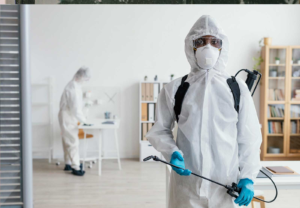A fence is a structure that is erected to mark boundaries. It is used to separate and protect livestock and wildlife from other animals and human activities. It is more widely used than roads. This is why ‘fence ecology’ has recently emerged as an important research area.
New Yorkers have developed an affinity for stainless steel, with fence fabrication shops popping up in Queens and Brooklyn. These fences have many uses, including the decorative ones. Click the https://fencingsummerville.com/ to learn more.

When it comes to securing private property, a fence plays a critical role. Besides delineating boundaries, fencing is also a powerful visual deterrent for intruders. In addition, fences are also a formidable barrier that requires significant effort to breach. This provides valuable time for the homeowner to be alerted or for intruders to abandon their unauthorized entry attempts. Fences can be further fortified with various security enhancements such as motion sensors, spikes, anti-climb paint, and other technological integrations.
While incorporating safety and security features into fence design can be challenging, the right mix of materials can help ensure that these elements are seamlessly integrated without compromising aesthetics. For example, the use of durable materials that can withstand extensive force and provide exceptional strength can enhance a fence’s security while keeping the overall cost-efficient and long-term maintenance costs low.
Incorporating safety and security features into fence designs may require additional permits and meeting stricter regulatory standards. Therefore, homeowners should consult with local authorities and law enforcement agencies prior to installing their new fence. This will ensure a smoother project flow and uphold community safety and security standards.
It’s also important to wear protective equipment during fence installation, especially if using power tools. This includes safety glasses and work gloves. Moreover, it’s recommended to survey the site prior to starting construction to identify any potential hazards such as underground utilities, uneven terrain, and nearby structures.
In addition to boosting home security, fences can also play an important role in reducing crime on business properties. For instance, criminals often target businesses that are not well-protected, such as open-air markets and pawn shops. Fences can provide an effective barrier that deters crime by clearly defining business boundaries and requiring significant effort to breach. In addition, fences can be equipped with surveillance and alarm systems to improve security even further.
Security
Fences are a critical security feature, as they serve as an effective visual deterrent and make it difficult for intruders to breach the property. They can also halt or delay access to a secured area, giving your security team time to respond. However, fences should be viewed as a single layer of a comprehensive security system. Additional layers include surveillance cameras and alarms. It’s important to regularly test these systems to ensure they’re working properly.
A fence is a wall or barrier, other than a building, erected at grade for the purpose of defining boundaries of property, separating open space, restricting ingress to or egress from property or providing security or protection to a facility. Fencing may be constructed of wood, masonry, boards, rails or wires and can be either permanent or temporary in nature.
Fencing is a common tactic used by criminals to hide stolen goods before selling them. They often modify items in order to conceal the theft or alter serial numbers, and may also attempt to transport the goods outside their home city, which reduces the likelihood of detection by law enforcement. For more valuable goods, fences may even disassemble the item and sell the parts individually.
The prices a fence pays thieves typically depend on norms as well as legitimate market rates for the items in question. This is particularly true for high-value items. In addition, some fences use brothels as a safe haven for the sales of stolen goods, due to special Ming laws that exempted brothels from being held accountable for their customers’ crimes.
Durability
Regardless of what kind of fence you choose for your property, it is important that it stands the test of time. A durable fence is able to resist environmental hazards and withstand the demands of day-to-day use, especially in areas prone to high activity. Each fencing material comes with its own unique set of strengths and weaknesses, but several features help to enhance durability.
Durability features are often determined by the type of material you select for your fence, though proper maintenance can also significantly impact longevity. For example, wood fences have a limited lifespan, but if they are properly treated and maintained, their longevity can be extended. Metal fences are highly durable, but they can rust or degrade in harsh climates and may require periodic coatings to prevent corrosion. Stainless steel is an excellent choice for coastal environments, animal enclosures, or long-term installations because it requires minimal maintenance and performs well in extreme conditions.
Even the most durable fence materials can experience significant challenges in Virginia’s diverse weather patterns, from summer thunderstorms to winter nor’easters. In addition, wind can create stress that may weaken or damage your fence. To minimize these risks, you should consider purchasing a durable option that has been designed to withstand local conditions, and opt for professional installation to ensure your fence is installed correctly.
In terms of material, galvanized wire is a popular and affordable choice for a variety of applications due to its strength and ability to withstand impact damage. GBW is typically galvanized before being welded or woven, which protects the weld points from rust and corrosion. For additional protection, you can opt for a zinc galvanized finish, which is more resistant to rust than the standard galvanized finish.
Aesthetics
A fence isn’t only a protective barrier—it’s also an opportunity to elevate your home’s curb appeal. From the selection of materials to decorative features, your fence’s design is a pivotal factor that influences the overall aesthetic harmony of your home’s exterior.
Whether your tastes lean towards traditional charm or contemporary allure, you can find an artistic fence idea that perfectly suits your sense of style. Incorporate natural greenery into your home’s fencing to add visual interest and character. Choosing vines and other climbing plants with natural resistance to harsh weather conditions ensures they remain vibrant and attractive over time.
Wood fencing offers a classic feel with its rich color variations and distinctive grain patterns. Choose from a variety of wood options like cedar and redwood to suit your aesthetic preferences. Alternatively, metal fences offer a sleek and modern look that complements minimalist and contemporary outdoor designs. Decorative iron and aluminum fences pair beautifully with geometric patterning to give your yard a clean-lined, refined aesthetic.
Artistic enhancements like murals and paintings offer a versatile way to personalize your fence. Collaborate with local artists or unleash your own creativity to create a mural that resonates with your surroundings or evokes emotion. Ensure your artistic fence elements can withstand outdoor conditions by using moisture-resistant paints and sealants.
The architectural landscape in North America has shifted to embrace minimalist and contemporary home designs. A sleek horizontal fence is a popular choice that complements this trend while still providing a safe and secure boundary.
Decorative
Ornamental fences offer many unique design elements that make them stand out as more than just protective boundaries. Some of these unique features include decorative post caps, lattice-screened tops, and built-in planters for greenery. These unique features help transform fences into a landscape element that complements the home and garden, blurring the lines between natural and man-made elements. Other distinctive design features include integrated lighting, which transforms fences from a simple boundary into an enchanting nighttime highlight.
Unique colors and textures are another way to add interest to a fence, complementing the aesthetics of a landscape. For example, a weathered look on wood fencing gives it an aura of timelessness that complements cottage-style landscaping. Alternatively, a polished metal finish offers a sleek appearance that enhances modern landscapes. Different textures also offer a contrast in visual interests, with rough wood complementing cottage style gardens and smooth metal enhancing modern landscapes.
Decorative fence tops, such as elaborate finials and ornate loops, can also be an effective way to enhance the appearance of a wooden fence. These unique designs are available in a range of shapes and sizes, offering the perfect finishing touch to any backyard design.
Other unique decorative features include patterned lattice screens, which create a cozy feel that complements the landscape. These are often made with reclaimed or recycled materials, making them a good choice for environmentally conscious homeowners who want to keep their yard beautiful while also supporting the local community.
Other unique design elements include custom carvings, which can enhance a fence’s aesthetic and functionality. These can be carved into a wrought iron or wood fence and serve as an ideal feature for a patio cover, pergola, or trellis. A sculptural element like this can draw attention to a particular part of the yard, such as a garden or swimming pool, creating an engaging focal point that draws people into the space.








